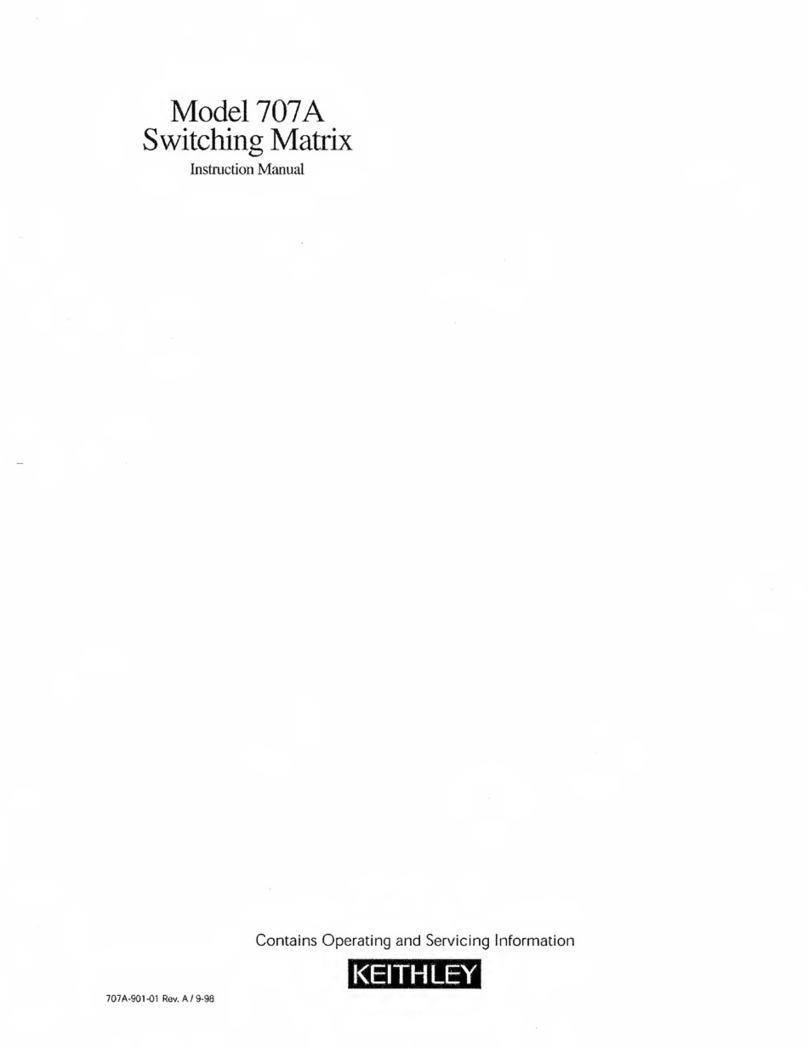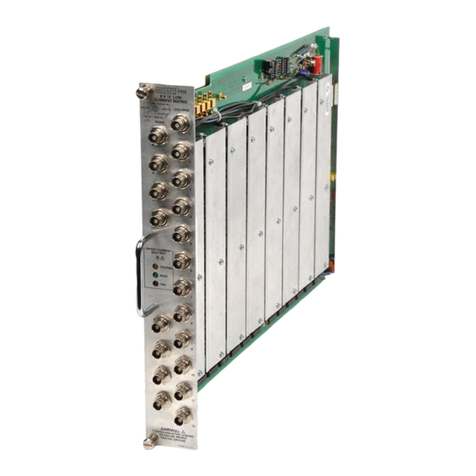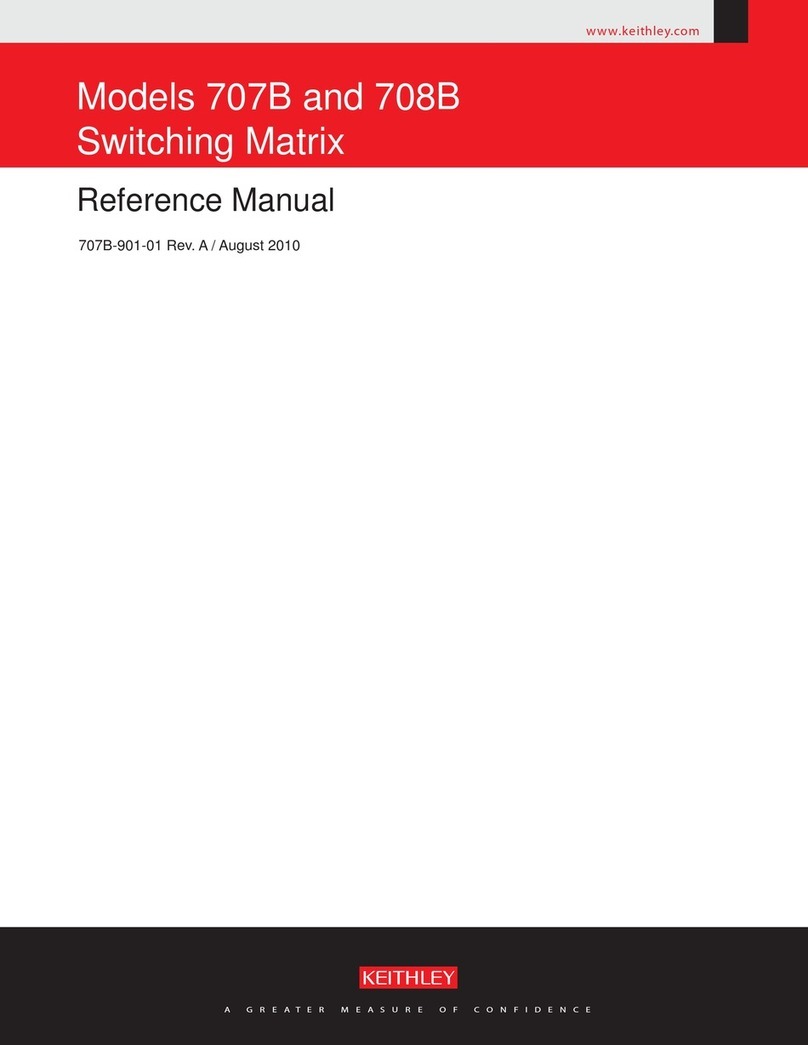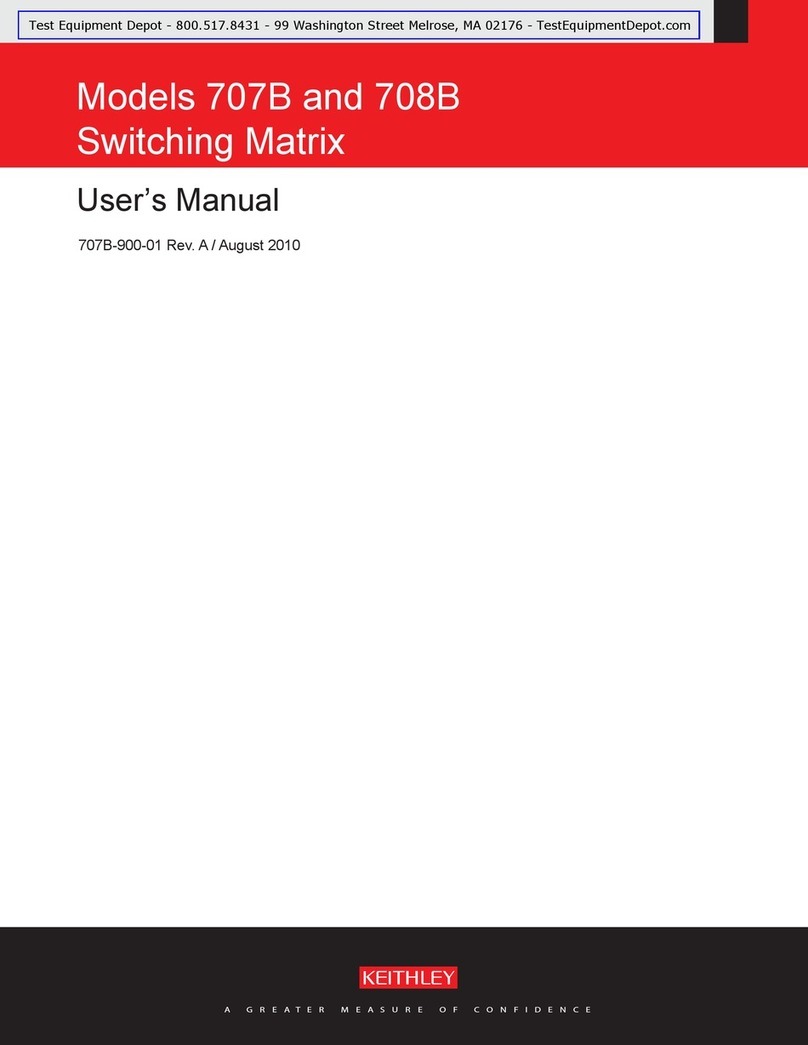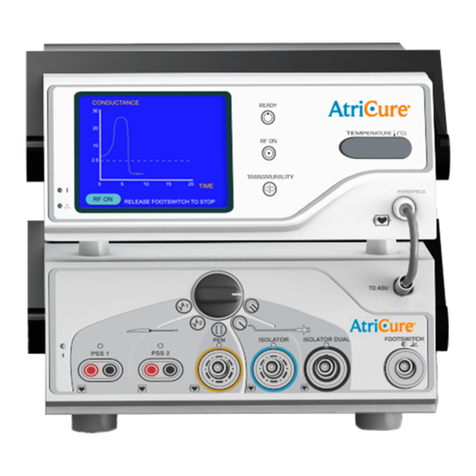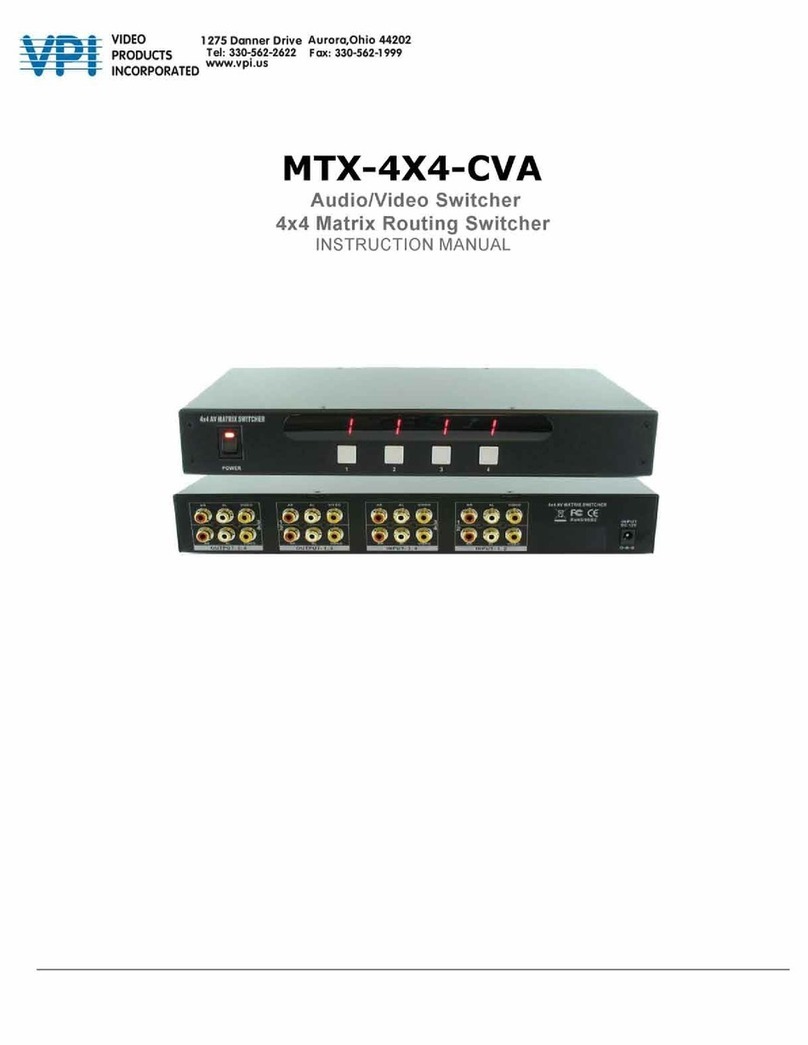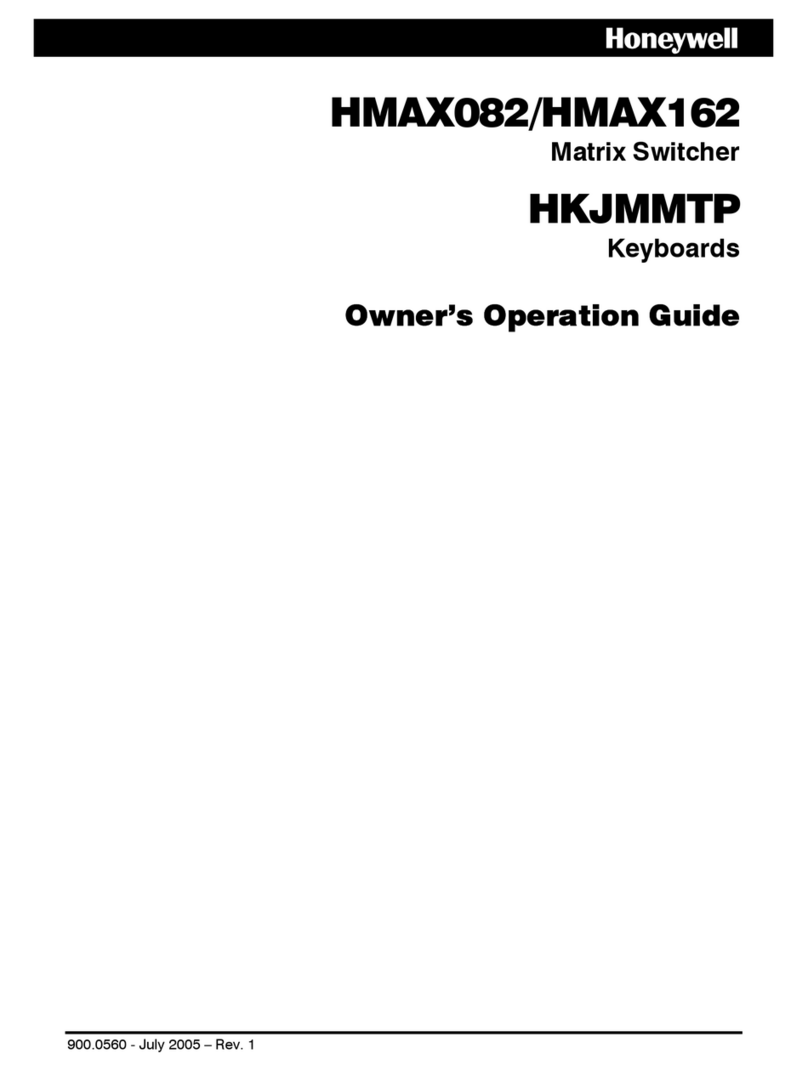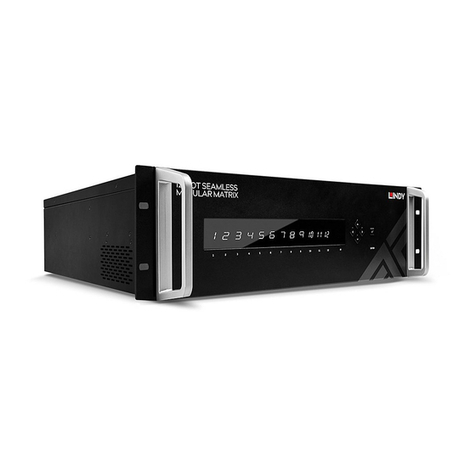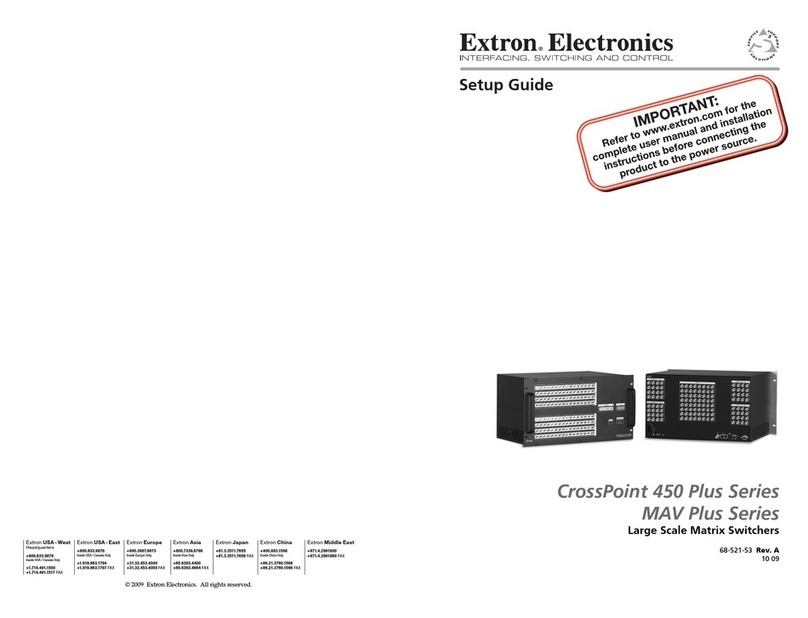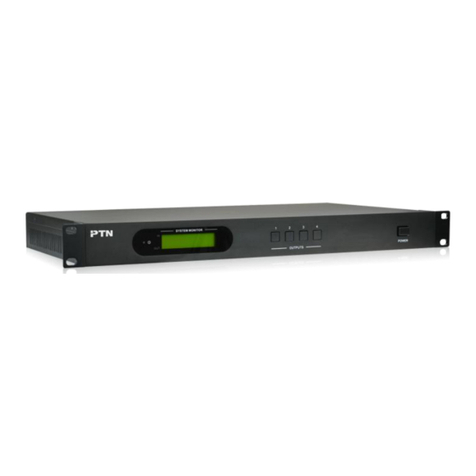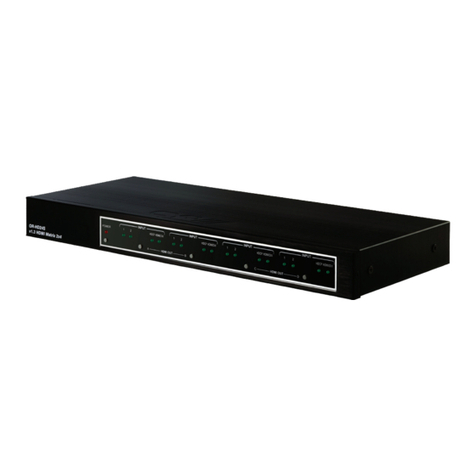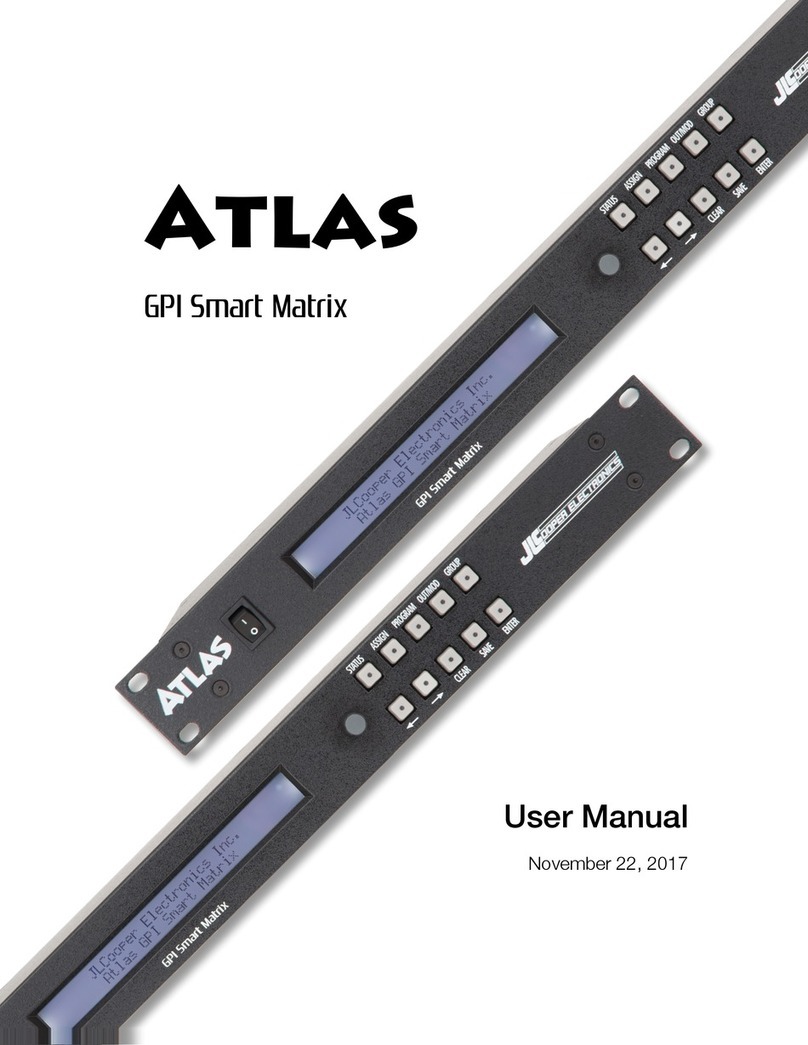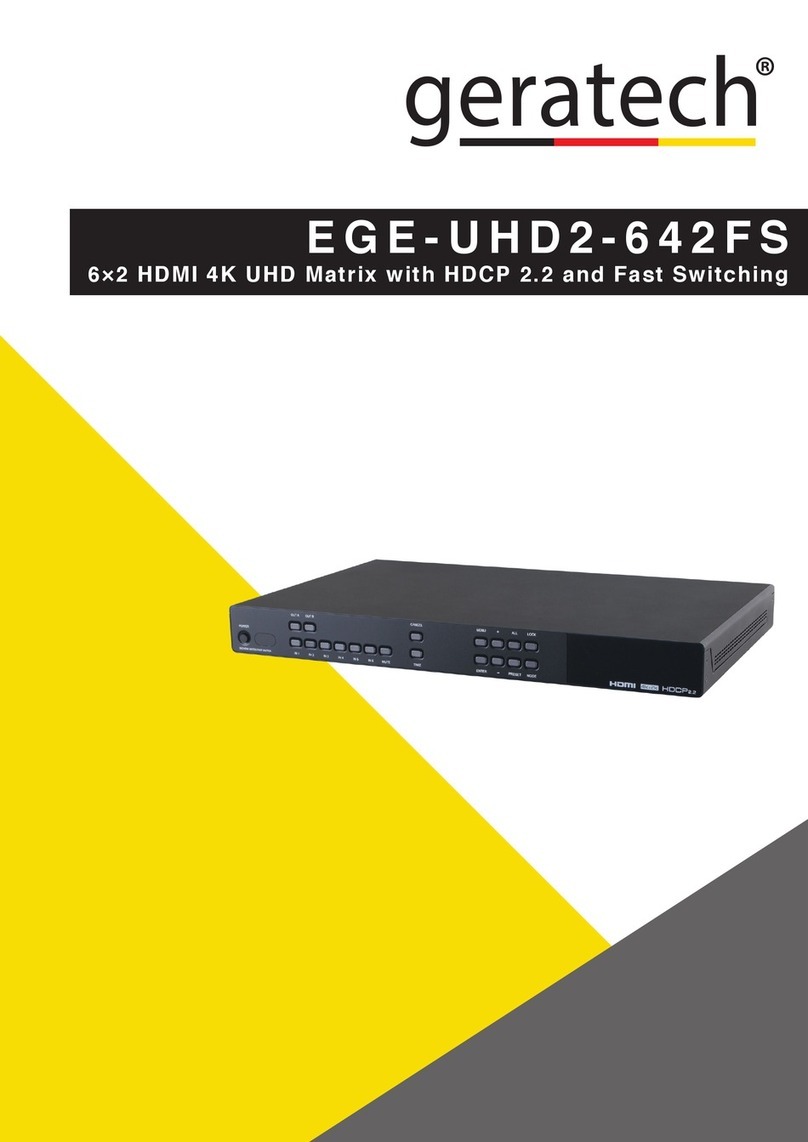Keithley 707B User manual

Models 707B and 708B Quick Start Guide

Observe the following safety precautions before using this product and any associated
instrumentation. Although some instruments and accessories would normally be used
with non-hazardous voltages, there are situations where hazardous conditions may be
present.
This product is intended for use by qualified personnel who recognize shock hazards
and are familiar with the safety precautions required to avoid possible injury. Read and
follow all installation, operation, and maintenance information carefully before using the
product. Refer to the user documentation for complete product specifications.
If the product is used in a manner not specified, the protection provided by the product
warranty may be impaired.
The types of product users are:
Responsible body is the individual or group responsible for use and maintenance of
equipment, for ensuring that the equipment is operated within its specifications and
operating limits, and for ensuring that operators are adequately trained.
Operators use the product for its intended function. They must be trained in electrical
safety procedures and proper use of the instrument. They must be protected from
electric shock and contact with hazardous live circuits.
Maintenance personnel perform routine procedures on the product to keep it
operating properly, for example, setting the line voltage or replacing consumable
materials. Maintenance procedures are described in the user documentation. The
procedures explicitly state if the operator may perform them. Otherwise, they should be
performed only by service personnel.
Service personnel are trained to work on live circuits, perform safe installations, and
repair products. Only properly trained service personnel may perform installation and
service procedures.
Keithley Instruments products are designed for use with electrical signals that are rated
Measurement Category I and Measurement Category II, as described in the International
Electrotechnical Commission (IEC) Standard IEC 60664. Most measurement, control, and
data I/O signals are Measurement Category I and must not be directly connected to mains
voltage or to voltage sources with high transient over-voltages. Measurement Category II
connections require protection for high transient overvoltages often associated with local
AC mains connections. Assume all measurement, control, and data I/O connections are
for connection to Category I sources unless otherwise marked or described in the user
documentation.
Exercise extreme caution when a shock hazard is present. Lethal voltage may be present
on cable connector jacks or test fixtures. The American National Standards Institute
(ANSI) states that a shock hazard exists when voltage levels greater than 30V RMS,
42.4V peak, or 60VDC are present. A good safety practice is to expect that hazardous
voltage is present in any unknown circuit before measuring.
Operators of this product must be protected from electric shock at all times. The
responsible body must ensure that operators are prevented access and/or insulated from
every connection point. In some cases, connections must be exposed to potential
human contact. Product operators in these circumstances must be trained to protect
themselves from the risk of electric shock. If the circuit is capable of operating at or
above 1000V, no conductive part of the circuit may be exposed.

Safety
Unpack Connect FAQs
Next steps
Introduction Test
Do not connect switching cards directly to unlimited power circuits. They are intended
to be used with impedance-limited sources. NEVER connect switching cards directly to
AC mains. When connecting sources to switching cards, install protective devices to
limit fault current and voltage to the card.
Before operating an instrument, ensure that the line cord is connected to a properly-
grounded power receptacle. Inspect the connecting cables, test leads, and jumpers for
possible wear, cracks, or breaks before each use.
When installing equipment where access to the main power cord is restricted, such as
rack mounting, a separate main input power disconnect device must be provided in
close proximity to the equipment and within easy reach of the operator.
For maximum safety, do not touch the product, test cables, or any other instruments
while power is applied to the circuit under test. ALWAYS remove power from the
entire test system and discharge any capacitors before: connecting or disconnecting
cables or jumpers, installing or removing switching cards, or making internal changes,
such as installing or removing jumpers.
Do not touch any object that could provide a current path to the common side of the
circuit under test or power line (earth) ground. Always make measurements with dry
hands while standing on a dry, insulated surface capable of withstanding the voltage
being measured.
The instrument and accessories must be used in accordance with its specifications and
operating instructions, or the safety of the equipment may be impaired.
Do not exceed the maximum signal levels of the instruments and accessories, as defined
in the specifications and operating information, and as shown on the instrument or test
fixture panels, or switching card.
When fuses are used in a product, replace with the same type and rating for continued
protection against fire hazard.
Chassis connections must only be used as shield connections for measuring circuits,
NOT as safety earth ground connections.
If you are using a test fixture, keep the lid closed while power is applied to the device
under test. Safe operation requires the use of a lid interlock.
If a screw is present, connect it to safety earth ground using the wire
recommended in the user documentation.
This symbol on an instrument means caution, risk of danger. The user should refer
to the operating instructions located in the user documentation in all cases where
the symbol is marked on the instrument.
This symbol on an instrument means caution, risk of danger. Use standard safety
precautions to avoid personal contact with these voltages.
This symbol on an instrument shows that the surface may be hot. Avoid personal
contact to prevent burns.
This symbol indicates a connection terminal to the equipment frame.
If the mercury symbol is on a product, it indicates that mercury is present in the
display lamp. Please note that the lamp must be properly disposed of according to
federal, state, and local laws.
WARNING This heading in the user documentation explains dangers that might result
in personal injury or death. Always read the associated information very
carefully before performing the indicated procedure.

CAUTION This heading in the user documentation explains hazards that could
damage the instrument. Such damage may invalidate the warranty.
Instrumentation and accessories shall not be connected to humans.
Before performing any maintenance, disconnect the line cord and all test cables.
To maintain protection from electric shock and fire, replacement components in mains
circuits - including the power transformer, test leads, and input jacks - must be
purchased from Keithley Instruments. Standard fuses with applicable national safety
approvals may be used if the rating and type are the same. Other components that are
not safety-related may be purchased from other suppliers as long as they are equivalent
to the original component (note that selected parts should be purchased only through
Keithley Instruments to maintain accuracy and functionality of the product). If you are
unsure about the applicability of a replacement component, call a Keithley Instruments
office for information.
To clean an instrument, use a damp cloth or mild, water-based cleaner. Clean the
exterior of the instrument only. Do not apply cleaner directly to the instrument or allow
liquids to enter or spill on the instrument. Products that consist of a circuit board with
no case or chassis (e.g., a data acquisition board for installation into a computer) should
never require cleaning if handled according to instructions. If the board becomes
contaminated and operation is affected, the board should be returned to the factory for
proper cleaning/servicing.

Safety
Unpack Connect FAQs
Next steps
Introduction Test
Introduction to the Model 707B or 708B Semiconductor Switching Matrix
The Models 707B and 708B provide outstanding low-current matrix
capability and let you control up to 576 matrix crosspoints in real
time. Their large matrix format makes them well suited for your large
ATE system applications, such as semiconductor device
characterization, wafer level reliability, parallel test, and modeling.
The Models 707B and 708B documentation includes:
Quick Start Guide: Shows you how to unpack and set up the
instrument to determine that the instrument is functional.
User's Manual: Provides an instrument overview and
example-based training to familiarize you with the instrument.
Reference Manual: Provides comprehensive information about
the instrument, including descriptions of all features and
programming commands.
The User's and Reference manuals are in PDF format on the
CD-ROM that is included with the instrument. If you do not have
Adobe Reader® to view the files, you can get a free download of it at
http://get.adobe.com/reader/.
CD-ROM contents
The CD-ROMs that are included with your instrument contain:
The Test Script Builder Software and Models 707B and 708B
TSB add-in, which is a software tool you can use to create,
modify, debug, and store TSP test scripts
Switching product information
Product documentation, including PDFs of the Quick Start
Guide, User's Manual, Reference Manual, the product data sheet,
product specifications, and rack-mount kit instructions
Product documentation for compatible switch cards
IVI Instrument Driver, driver for National Instrument’s
LabVIEW®, and related release notes
J2SE™ Runtime Environment
Keithley I/O layer and release notes
For the latest drivers and additional support information, see
http://www.keithley.com/support.

Unpack and inspect the instrument
To unpack and inspect the instrument:
1. Inspect the box for damage.
2. Open the top of the box.
3. Model 707B only: Remove the bag that contains the
documentation, accessories, and CD-ROMs.
4. Remove the packaging insert.

Safety
Unpack Connect FAQs
Next steps
Introduction Test
5. Model 707B only: Remove the fixed rack mounting hardware
from the box. The parts are next to the instrument in separate
packaging.
6. Carefully lift the instrument out of the box.
Model 707B
rack-mounting
hardware
Model 707B
Instrument
7. Inspect the instrument for any obvious signs of physical damage.
Report any damage to the shipping agent immediately.

You should have received:
Model 707B or 708B Switching Matrix
1. Model 707B only: Fixed rack-mounting hardware
2. Safety Standard Information
3. Product related CD-ROMs
4. Model 707B or 708B Quick Start Guide
5. Power line cord
6. Ethernet cable
7. TSP Link cable
8. Rack mount hardware (707B and 708B)
2
3
4
5
67
8
1
Refer to the packing list for additional items that might have shipped
with your instrument.

Safety
Unpack Connect FAQs
Next steps
Introduction Test
Connect the instrument
Important test system safety information
This product is sold as a stand-alone instrument that may become
part of a system that could contain hazardous voltages and energy
sources. It is the responsibility of the test system designer, integrator,
installer, maintenance personnel, and service personnel to make sure
the system is safe during use and is operating properly.
You must also realize that in many test systems a single fault, such as
a software error, may output hazardous signal levels even when the
system indicates that there is no hazard present.
It is important that you consider the following factors in your system
design and use:
The international safety standard IEC 61010-1 defines
voltages as hazardous if they exceed 30 V RMS and
42.4 V peak, or 60 V DC for equipment rated for dry
locations. Keithley Instruments, Inc. products are only
rated for dry locations.
Read and comply with the specifications of all instruments
in the system. The overall allowed signal levels may be
constrained by the lowest rated instrument in the system.
For example, if you are using a 500 V power supply with a
300 V DC rated switch, the maximum allowed voltage in
the system is only 300 V DC.
Make sure any test fixture connected to the system protects
the operator from contact with hazardous voltages, hot
surfaces, or sharp objects. This may be accomplished by
using shields, barriers, insulation, safety interlocks, and so
on
Cover the device under test (DUT) to protect an operator
from flying debris in the event of a system or DUT failure.
Double insulate all electrical connections that an operator
can touch. Double insulation ensures the operator is still

protected even if one insulation layer fails. Refer to IEC
61010-1 for specific requirements.
Make sure all connections are behind a locked cabinet door
or other barrier. This protects the system operator from
accidentally removing a connection by hand and exposing
hazardous voltages.
Use high-reliability fail-safe interlock switches to
disconnect power sources when a test fixture cover is
opened.
Where possible, use automatic handlers so operators are
not required to access the DUT or other potentially
hazardous areas.
Provide training to all users of the system so they
understand all potential hazards and know how to protect
themselves from injury.
In many systems, during power up, the outputs may be in
an unknown state until they are properly initialized. Make
sure the design can tolerate this situation without causing
operator injury or hardware damage.
Additionally, always read and follow all safety warnings provided with
the specific instruments to keep system users safe.

Safety
Unpack Connect FAQs
Next steps
Introduction Test
Install and connect a switching card
A switching card can be installed by the user; however external
connections to the switching module must be performed by qualified
service personnel.
Equipment needed:
Model 707B or 708B Semiconductor Switching Matrix
Switching card
Flat-bladed screwdriver
WARNING
To prevent electric shock that could result in injury or death,
NEVER handle a switching card that has power applied to it.
Before installing or removing a switching card, make sure the
Model 707B or 708B is turned off and disconnected from line
power. Even when the instrument is powered off, hazardous
voltages may be present in signal cables attached to the switch
cards. Always disconnect all cables before removing or
installing a switch card.
WARNING
Slot covers must be installed on unused slots to prevent
personal contact with high-voltage circuits.
To install a switching card in the Model 707B or 708B:
1. Turn the instrument power off.
2. Position the instrument so that you are facing the rear panel.
WARNING
As described in the International Electrotechnical Commission
(IEC) Standard IEC 664, the Model 707B and 708B switch cards
are Installation Category I and must not be connected to mains.

3. Disconnect the power line cord and any other cables connected
to the rear panel.
4. Remove the slot cover plate from the desired mainframe slot
(note that Slot 1 does not have a cover plate). Retain the plate
and screws for future use.
Slot 1 Slot Covers
Model 707B Rear Panel
5. Align the card edge into the card guide of the slot.
Card Guide
Card Edge
Model 707B Rear Panel Slot 1
6. Slide in the module. For approximately the last ¼ inch, press in
firmly to mate the module connector to the mainframe
connector.

Safety
Unpack Connect FAQs
Next steps
Introduction Test
7. On each side of the module, there is a mounting screw. Use the
flat-bladed screwdriver to tighten these two screws to secure the
module to the mainframe. Do not overtighten.
Mounting
Screws
Model 707B Rear Panel
Note that all signal wiring to devices and instruments is done through
the switch cards. Please refer to the switch card documentation for
additional information.
Install the instrument
The Models 707B and 708B are designed for rack mounting. Please
see the instructions that came with your rack mount installation
details.
For the Model 707B, note that the air intakes for the fan are located
on the rear panel above the IEEE-488 connector and on the side
panel. The space around these areas should be free from obstruction
in order ensure proper fan operation.
Connect line power
The Models 707B and 708B operate from a line voltage of 100 V to
240 V at a frequency of 50 Hz or 60 Hz. Line voltage is automatically
sensed (there are no switches to set). Make sure the operating voltage
in your area is compatible.

Operating the instrument on an incorrect line voltage
may cause damage to the instrument, possibly
voiding the warranty.
WARNING
The power cord supplied with the Model 707B or 708B contains a
separate ground wire for use with grounded outlets. When
proper connections are made, instrument chassis is connected
to power line ground through the ground wire in the power cord.
Failure to use a grounded outlet may result in personal injury or
death due to electric shock.
To connect line power:
1. Make sure that the front panel power switch is in the off (0)
position.
2. Connect the socket of the supplied power cord to the power
connection (AC receptacle) on the rear panel.
3. Connect the plug of the power cord to a grounded AC outlet.

Safety
Unpack Connect FAQs
Next steps
Introduction Test
Turn on the instrument
Turn on the instrument by pressing the front panel POWER switch
to the on (|) position.
POWER Switch
ON position
Power-up sequence
When the instrument is turned on, you should see:
Three dots
All segments of the displays light
All LED indicators light
A brief display showing "KEITHLEY Model 707B" or
"KEITHLEY Model 708B"
The entire power-up process takes approximately five seconds to
complete. When initialization is complete, the bottom display shows
“1A+01” in the center of the display.
To turn power off, press POWER a second time.
After the instrument is powered up, all relays are open.

Test the instrument
To test the instrument for basic operation:
1. On the front cover of the instrument, press the SLOT key. You
should see the word "MAIN:" and the model number,
description, and the firmware revision for the instrument.
2. Turn the navigation wheel to display the firmware version
information for the installed switching card(s).
3. Press the EXIT key to return to the operating display.
4. To close a channel, push the navigation wheel to edit the slot and
row, turn the wheel to change the value. Push the navigation
wheel to accept the displayed slot and row; this will also activate
edit mode for the column. Rotate the navigation wheel to
change the column value and push the navigation wheel to accept
the channel shown on the display.
5. Press CLOSE to close the channel. The closure should be
indicated on the display.

Safety
Unpack Connect FAQs
Next steps
Introduction Test
6. To open the channel, press OPEN.
7. These steps confirm basic functionality of your system. Please
turn your system OFF now.
The examples in the Models 707B and 708B User's Manual have
been designed to demonstrate increasing levels of functionality of
your Model 707B or 708B. We highly recommend first-time
users complete the appropriate examples from the User's Manual.


Safety
Unpack Connect FAQs
Next steps
Introduction Test
FAQs
What should I do if I see an error message when I turn
the instrument on?
If an error message is displayed, press a front panel key. The Model
707B or 708B will attempt normal operation.
Next steps
Refer to the Models 707B and 708B User's Manual for general
information about the instrument and application examples that will
help familiarize you with the instrument (on the CD-ROM).
Refer to the Model 707B and 708B Reference Manual for detailed
information about all features of the instrument (on the CD-ROM).
See www.keithley.com for support and additional information about
the instrument.

Specications are subject to change without notice.
All Keithley trademarks and trade names are the property of Keithley Instruments, Inc.
All other trademarks and trade names are the property of their respective companies.
A GREATER MEASURE OF CONFIDENCE
KEITHLEY INSTRUMENTS, INC. 28775 AURORA RD. CLEVELAND, OH 44139-1891 440-248-0400 Fax: 440-248-6168 1-888-KEITHLEY www.keithley.com
BELGIUM
Sin-Pieters-Leeuw
Ph: 02-3630040
Fax: 02-3630064
www.keithley.nl
ITALY
Peschiera Borromeo (Mi)
Ph: 02-5538421
Fax: 02-55384228
www.keithley.it
JAPAN
Tokyo
Ph: 81-3-5733-7555
Fax: 81-3-5733-7556
www.keithley.jp
KOREA
Seoul
Ph: 82-2-574-7778
Fax: 82-2-574-7838
www.keithley.co.kr
MALAYSIA
Penang
Ph: 60-4-643-9679
Fax: 60-4-643-3794
www.keithley.com
NETHERLANDS
Gorinchem
Ph: 0183-635333
Fax: 0183-630821
www.keithley.nl
CHINA
Beijing
Ph: 86-10-8447-5556
Fax: 86-10-8225-5018
www.keithley.com.cn
FRANCE
Saint-Aubin
Ph: 01-64532020
Fax: 01-60117726
www.keithley.fr
GERMANY
Germering
Ph: 089-84930740
Fax: 089-84930734
www.keithley.de
INDIA
Bangalore
Ph: 080-26771071, -72, -73
Fax: 080-26771076
www.keithley.com
© Copyright 2010 Keithley Instruments, Inc. Printed in the U.S.A. 707B-903-01 Rev. A / August 2010
SINGAPORE
Singapore
Ph: 65-6747-9077
Fax: 65-6747-2991
www.keithley.com
SWITZERLAND
Zürich
Ph: 044-8219444
Fax: 044-8203081
www.keithley.ch
TAIWAN
Hsinchu
Ph: 886-3-572-9077
Fax: 886-3-572-9031
www.keithley.com.tw
UNITED KINGDOM
Theale
Ph: 0118-9297500
Fax: 0118-9297519
www.keithley.co.uk
Other manuals for 707B
2
This manual suits for next models
1
Table of contents
Other Keithley Matrix Switcher manuals

